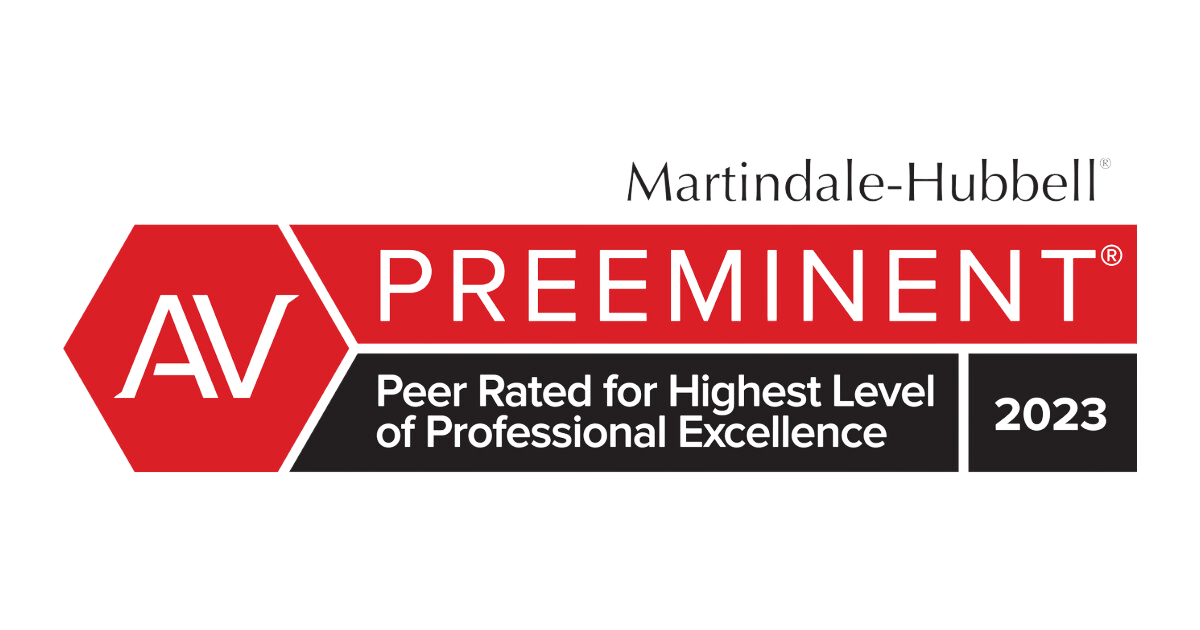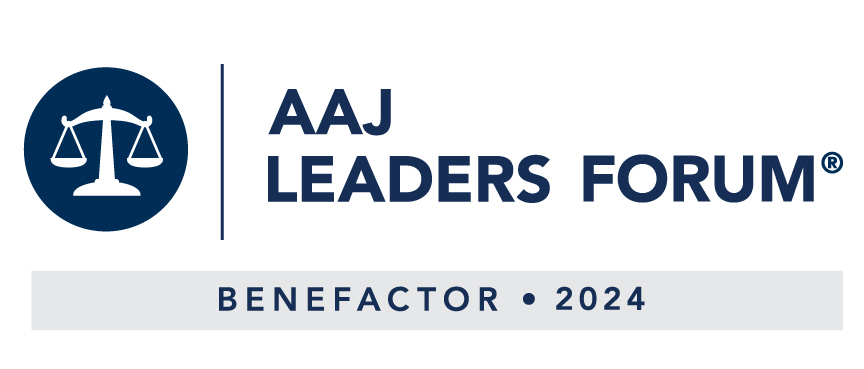Asbestos Lawyers: Louis Dupont V. Pittsburgh Corning Corp
Court Explains Why Defendants Can’t Avoid Jury Trials
SAN FRANCISCO, CA — October 28, 1999 — A California Court of Appeal reversed a lower court ruling, reinstating the case of Brayton Purcell LLP client Louis Dupont against asbestos insulation manufacturer Pittsburgh Corning Corporation. The opinion will make it tougher for asbestos manufacturers to avoid trials by jury.
Asbestos Exposure in the Shipyard
During the period from 1952 through 1994, Mr. Dupont worked at Mare Island Naval Shipyard as an ordnance equipment worker and mechanic. His work at Mare Island included removing, inspecting, and repairing ship machinery which in turn involved removing pipe insulation.
Pittsburgh Corning had argued that Mr. Dupont had not yet produced enough evidence to prove at trial that he was exposed to their Unibestos insulation. While the trial judge initially agreed, this decision was reversed on appeal. The Appellate Court, in a detailed discussion of the complex law of California summary judgment, felt that Pittsburgh Corning’s motion was not adequate in light of specific information provided in Mr. Dupont’s interrogatory responses, including information regarding the supply of Unibestos to Mare Island through a distributor.
The following official unpublished opinion of the court describes the proof that an asbestos manufacturer must provide in order to obtain dismissal of a plaintiff’s case before trial. The opinion, although not published as precedent does provide useful insight into the proper approach to avoid summary judgment in the First Appellate District. Mr. Dupont’s case is now back into the trial court, proceeding to trial against defendant Pittsburgh Corning Corporation.
IN THE COURT OF APPEALS OF THE STATE OF CALIFORNIA
FIRST APPELLATE DISTRICT
DIVISION THREE
LOUIS DUPONT, Plaintiff and Appellant v. PITTSBURGH CORNING CORPORATION, Defendant and Respondent.
A085007
San Francisco County Superior Court No. 973984
This case requires us to consider once again the extent to which a defendant may use a plaintiff’s discovery responses to shift the burden of proof to the plaintiff in a Summary Judgment context. Our recent opinion in Chaknova v. Wilbur–Ellis Co. (1999) 69 Cal.App.4th 962 (Chaknova) provides the framework for our analysis in the case at bench. We conclude that the trial court erred in granting summary judgment in favor of Pittsburgh Corning Corporation (PCC or respondent).
I. FACTS
A. Complaint
Louis Dupont (appellant) filed a complaint on November 14, 1995, contending that he was injured as a consequence of “cumulative exposure to asbestos and asbestos-containing products” manufactured, sold, or distributed by literally scores of defendants, including PCC. Appellant sought recovery on theories of negligence, strict liability, negligent infliction of emotional distress, “false representation,” and “intentional tort.”
B. Motion for Summary Judgment
PCC’s motion for summary judgment was based on its claim that appellant’s responses to interrogatories and questions posed at his deposition were devoid of information that he was ever exposed to asbestos-containing materials manufactured by PCC and, thus, that PCC’s “activities” could not have been a “substantial factor” in “causing or contributing to” appellant’s asbestos-related injuries. PCC’s statement of undisputed facts comprised four facts:
(1) appellant was exposed to asbestos-related products during his working career;
(2) his exposure was alleged to have caused asbestos-related injuries;
(3) PCC “was not the manufacturer or seller of any asbestos-containing products to which [appellant] was exposed;” and
(4) appellant was not exposed to asbestos fibers from asbestos-containing materials made by PCC. The evidence supporting PCC’s statement of undisputed facts consisted of various exhibits attached to a declaration submitted by PCC’s counsel.
Specifically, counsel attached
(a) a declaration from a PCC officer regarding the timeframe in which PCC manufactured and sold asbestos-containing products (a single product called “Unibestos”),
(b) appellant’s responses to four “standard” asbestos–case interrogatories;
(c) appellant’s responses to six “contention” interrogatories promulgated by PCC; and
(d) excerpts from the appellant’s deposition.
In the appellant’s response to PCC’s motion, he did not dispute the first or second of PCC’s undisputed facts. He did, however, dispute the third and fourth facts, based on portions of the same evidence used by PCC to support its motion. Appellant also objected to the defense counsel’s declaration as “deficient because it fails to show non–identification of Unibestos at [appellant’s] deposition and lacking foundation.”
Following argument, the trial court issued a written order granting summary judgment: “because no evidence exists of [appellant’s] exposure to [respondent’s asbestos-containing thermal insulation product. In concluding that [appellant] has failed to produce any admissible evidence giving rise to a triable issue of fact here, the Court finds that [appellant’s] answers to standard defense interrogatories and to [respondent’s] contentions interrogatories are factually devoid and inadmissible as evidence with respect to [his] exposure to [respondent’s product]. Further support for this Order is found in [appellant’s] deposition testimony. . . by which [appellant] admits as to each of the ships in which he alleges exposure to Unibestos that he does not know the manufacturers or brand names of the thermal insulation that was installed or removed, or that he does not recall any insulation being disturbed in his presence, or that he does not contend that he was exposed to asbestos while onboard.”
II. ANALYSIS
A. California Law Permits the Use of Discovery Responses to Shift the Burden for Summary Judgment Purposes Under Certain Circumstances
“On summary judgment, a defendant’s burden may be met by showing that ‘one or more elements of the [plaintiff’s] cause of action. . .cannot be established, or that there is a complete defense to that cause of action.’ ([Code Civ. Proc, 1] § 437c, subd. (o)(2).) Once the defendant has met that burden, the burden shifts to the plaintiff to show that ‘a triable issue of one or more material facts exists as to that cause of action. . . .’ (Ibid.) A plaintiff, in meeting the shifted burden, ‘shall set forth the specific facts showing that a triable issue of material fact exists as to that cause of action.’ (Ibid.) As explained in Union Bank v. Superior Court (1995) 31 Cal.App.4th 573 [37 Cal.Rptr.2d 653], ‘ “a moving defendant may rely on factually devoid discovery responses to shift the burden of proof pursuant to section 437c, subdivision (0)(2). Once the burden shifts as a result of the factually devoid discovery responses, the plaintiff must set forth the specific facts which prove the existence of a triable issue of material fact.” ‘ (Id. at p. 590; accord, Hunter v. Pacific Mechanical Corp. (1995) 37 Cal.App.4th 1282, 1287 [44 Cal.Rptr.2d 335] (Hunter).) If the plaintiff fails to make that showing, summary judgment ‘shall be granted.’ (§ 437c, subd. (c).)
“In Hunter, summary judgment was granted in favor of defendant Pacific Mechanical Corp. (PMC), a contractor alleged to have ‘supplied, installed, and/or removed asbestos-containing products at the same jobsites’ where the plaintiff was working, thereby exposing him to asbestos because of his close working proximity to PMC employees. PMC moved for summary judgment, relying primarily on the plaintiff’s deposition testimony that he was unfamiliar with PMC and could not remember ever working in the same area with PMC employees. In opposing the motion, the plaintiff provided evidence to show that there was ‘an overlap in worksites during various time frames, suggesting that it was possible that he could have been present at the same jobsite as PMC employees.’ (Hunter, supra, 37, Cal.App.4th at pp. 1284–1285.) The trial court granted summary judgment because plaintiff’s own deposition showed that he could not establish an evidentiary basis for PMC’s liability and plaintiff submitted no other facts to rebut that showing.
“On appeal, following the Union Bank analysis, the court affirmed, explaining that ‘PMC was not required to come forward with evidence of its own to affirmatively demonstrate that Hunter. could not have been exposed to asbestos as a result of PMC’s activities. Rather, it was enough to show through factually vague discovery responses that [plaintiff] lacked any significant probative evidence on the critical element of causation. In other words, PMC could effectively show that the element of causation “cannot be established” by pointing to an absence of evidence to support this element. (§ 437c, subd. (o)(2).)’ (Hunter, supra, 37 Cal.App.4th at p. 1288, italics in original.) Upon this showing, the burden shifted to the plaintiff to show the existence of a triable issue of material fact as to causation. (Ibid.) Because the plaintiff in Hunter failed to produce such evidence and made only an insufficient showing that PMC was ‘potentially present’ at plaintiff’s worksite, he did not create a genuine factual dispute, and summary judgment was proper. (/d. at pp. 1289–1290.)” (Chaknova, supra, 69 Cal.App.4th at pp. 974–975.)
In Chaknova, Dorothy and Albert Chaknova sued several defendants for loss of consortium and personal injuries stemming from Albert’s exposure to asbestos. One defendant, Wilbur–Ellis Co. (Wilbur–Ellis), successfully moved for summary judgment, based, in part, on its claim that the plaintiffs’ discovery responses failed to establish that Albert was exposed to asbestos brokered by Wilbur–Ellis. (Chaknova, supra, 69 Cal.App.4th at pp. 965, 974.)
We affirmed the trial court, finding the situation factual “similar” to Hunter. (Chaknova, supra, 69 Cal.App.4th at p. 975.) We noted that Wilbur–Ellis supported its motion with Albert’s deposition testimony in which he indicated that he had never heard of L. H. Butcher (Wilbur–Ellis’s predecessor–in–interest) and did not recall using products made by Fibreboard or Pabco (two entities which may have used asbestos fibers sold by Butcher) in his career as a pipefitter. Wilbur–Ellis also supported its motion with Albert’s interrogatory answers which made no reference to Butcher as one of the dozens of entities to whose products he had been exposed; indeed, the answers failed to mention Butcher at all. (Id. at pp. 975–976.)
We also noted that the Chaknovas opposed Wilbur–Ellis’s motion through reference to Wilbur–Ellis’s discovery responses which showed that Butcher sold raw asbestos fibers used in Fibreboard, Eagle–Picher, and Pabco products, and Albert’s responses to special interrogatories in which he contended “generally” that he had been exposed to Fibreboard, Eagle–Picher and Pabco products on certain job sites. The Chaknovas contended that those responses created a triable issue of fact regarding Albert’s exposure to Butcher/Wilbur–Ellis products.
We disagreed: “We hold that the evidence is neither actually nor hypothetically susceptible to such an inference. First, while the Chaknovas’ discovery responses indicate generally that Fibreboard and Pabco products might have been present at some jobsites, Albert Chaknova’s deposition testimony is more specific in stating that he has no such knowledge or recollection. Second, under Hunter, the evidence presented by appellants is insufficient, as it ‘offers only speculation and conjecture’ regarding exposure to asbestos–containing products brokered by L. H. Butcher/Wilbur–Ellis. As was the case in Hunter, after ample time to undertake discovery, appellants have ‘provided no evidence with respect to the time, location and actual circumstances’ of Albert Chaknova’s exposure to asbestos products in any manner related to respondents. (Hunter, supra, 37 Cal.App.4th at p. 1290.) By reference to appellants’ factually devoid discovery responses, respondent showed that appellants could not establish at least one element of their cause of action. Appellants failed to present evidence in response sufficient to create a triable issue of material fact regarding Albert Chaknova’s exposure to asbestos-containing products related to respondent. Summary judgment was properly entered in favor of Wilbur–Ellis.” (Chaknova, supra, 69 Cal.App.4th at pp. 977–978, fn. omitted.)
Courts of appeal have not been unanimous in affirming summary judgments based on allegedly inadequate or vague responses to discovery. In Chaknova, we reviewed––and distinguished––three such cases: “[In Villa v. McFerren (1995) 35 Cal.App.4th 733 ], the defendant’s reliance on the plaintiffs factually devoid discovery responses was inadequate to shift the burden of proof on summary judgment, because the plaintiff could not have been expected to have knowledge of the defendant’s allegedly conspiratorial conversations, a matter particularly within the defendant’s own knowledge. For the same reason, Hagen v. Hickenbottom (1995) 41 Cal.App.4th 168 [48 Cal.Rptr.2d 197] is of no help to appellants. In that case, factually devoid discovery responses did not shift the burden of proof on summary judgment to the plaintiffs because they could not have had personal knowledge of alleged undue influence exerted by the defendant over the decedent. By contrast, here, Albert Chaknova does have personal knowledge of his working environments since the 1940’s, and provided no evidence to implicate respondent in his asbestos exposure.
Finally, the similarity to Hunter distinguishes this case from Division Two’s recent opinion in Scheiding v. Dinwiddie Construction Co. (1999) 69 Cal.App.4th 64 [81 Cal.Rptr.2d 360]. In Scheiding defendant Dinwiddie sought summary judgment based ‘upon the declaration of defense counsel that “[p]laintiff did not testify that he worked at any jobsite at which Dinwiddie was the general contractor.” ‘ (Id. at p. 80.) The court refused to extend Hunter to the case before it because no party had ever directly asked the plaintiff whether Dinwiddie had been the general contractor at any jobsite where the plaintiff had worked; in fact, no one ever asked the plaintiff anything about Dinwiddie. (Ibid.) On this basis, the Scheiding court distinguished Hunter, because in Hunter (as here) there was deposition testimony ‘where the plaintiff was specifically asked about the defendant and said he “could not recall” …. [Citation.]’ (Ibid., italics in original.) These questions and their answers were sufficient to support a showing of ‘factually devoid’ discovery responses. Without such specifically asked questions, however, the Scheiding court concluded it would be unreasonable to infer that plaintiff could produce no evidence linking Dinwiddie to plaintiff’s illness. Because the facts in the case before us parallel those in Hunter, we follow that case.” (Chaknova, supra, 69 Cal.App.4th at pp. 975–976, ill. 12.)
With these principles and cases in mind, we examine the evidence submitted in support of respondent’s motion.
B. PCC’s Showing Was Inadequate to Shift the Burden to Appellant
1. Evidence Presented
As noted above, respondent relied, first, on appellant’s responses to four “standard” asbestos–case interrogatories–––specifically, Nos. 25, 26, 28, and 29. Interrogatory No. 25 required appellant to provide detailed information about every job he ever had. Appellant’s response chronicled a job history beginning in 1962 which included a stint from July 1981 through December 1995 at Mare Island Naval Shipyard where he worked as an ordnance equipment worker and mechanic. His work at Mare Island included removing, inspecting, and repairing ship machinery which in turn involved removing bulkhead lining and piping insulation. He indicated that he worked on 50 ships which he identified by name.
Interrogatory No. 26 asked for detailed information about employment in which appellant claimed he was exposed to asbestos. In addition to referring to his response to Interrogatory No. 25, appellant stated that he may have been exposed to asbestos fiber, tape, cloth, pipe covering, insulation, and other materials. He also noted that “not all exposure to asbestos and asbestos-containing products was from ‘new’ asbestos and ‘new’ asbestos-containing products since exposure occurred during retrofit and repair. Additionally, [appellant] was exposed to asbestos and asbestos-containing products used by co-workers and other trades working in close proximity to him….” Subpart (j) of Interrogatory No. 26 asked for information about other persons who might have information about appellant’s exposure to asbestos. In reply, appellant attached an exhibit (Exhibit A) to his answers. Exhibit A set out the names and addresses of numerous Mare Island employees. It also included a paragraph of special significance to the case at bench: “Mare Island Shipyard Nuclear Inspection records reveal that METALCLAD INSULATION supplied UNIBESTOS for use on the USS GUITARRO …. ; the USS HAWKBILL …; the USS PINATO … and the USS DRUM [four ships on which appellant worked]. These records are currently classified, and subject to a protective order, but a summary can be provided upon execution of [an] appropriate confidentiality agreement.” (Emphasis in original.)
Interrogatory No. 28 asked for detailed information about each “asbestos material and/or asbestos-containing product” to which appellant was exposed. In reply, appellant again referred to his response to Interrogatory No. 25. tie further “contend[ed] that he was exposed to products manufactured by numerous defendants, including respondent. Interrogatory No. 29 asked about cartons and wrappings for asbestos-containing products on the jobs on which appellant worked. Appellant indicated that he could not identify any such cartons or wrappings.
Respondent’s contention interrogatories––propounded in March 1997~required appellant to provide detailed information about his exposure to respondent’s asbestos-containing products. Among other things, appellant was required to describe the evidence (including documents, names of witnesses, and other materials) which supported his claim of exposure to respondent’s products. In reply, appellant indicated that he had been exposed to Unibestos while working on the jobsites noted in an exhibit attached to his answers. He also listed 12 ships on which he had worked (including the four noted above) for which he had “documents establishing that Unibestos was used.” He also set out the names and addresses of numerous witnesses who could testify about his exposure to Unibestos, he further identified a number of deposition transcripts and discovery responses by respondent in other cases which could verify his exposure to Unibestos.
Respondent also attached excerpts from appellant’s deposition of March 1997. The excerpts were contained in a 30–page exhibit which included only a portion of appellant’s several–hundred-page deposition.
The question we must answer is whether or not respondent’s showing was sufficient to shift the burden of proof to appellant. In their briefs, both parties attempt to assist us in answering that question by focusing on appellant’s deposition testimony. However, for reasons set forth below, we begin by analyzing appellant’s answers to interrogatories.
2. Answers to Interrogatories
Respondent emphasizes the fact that certain of appellant’s answers regaling his exposure to Unibestos were made on “information and belief.” Respondent notes, for example, that, in response to its sixth contention interrogatory which asked appellant to describe the work he was performing when he was exposed to Unibestos, appellant replied (in part) that he “is currently informed and believes that Unibestos was present at the jobsites listed on Exhibit ‘A’ [in which appellant identified his work as a Navy aviation ordinance man aboard the USS Hancock for four years and his work at Mare Island], and that he was exposed to Unibestos during performance of his job duties as an aviation ordinance man and ordinance equipment mechanic at those jobsites.” Respondent also points out that in response to an interrogatory asking for a description of the products made by respondent to which he was exposed, appellant provided no detailed physical description of any product and simply reiterated a “contention” that he was exposed to Unibestos. Respondent concludes that appellant’s answers were “devoid” of facts which establish that he ever “worked around Unibestos or was ever exposed to asbestos dust from that product.”
Respondent’s analysis fails to take into consideration (a) appellant’s complete responses to respondent’s sixth contention interrogatory; (b) appellant’s response to respondent’s third contention interrogatory; and (c) appellant’s response to Interrogatory No. 26 of the standard asbestos–case interrogatories, including, particularly, Exhibit A referenced therein. We consider each in order.
In addition to the portion of appellant’s response to the sixth contention interrogatory set forth above, appellant stated that he had worked on 12 ships (all identified by name) “on all of which [appellant] has documents establishing that Unibestos was used [Appellant] also worked in close proximity to pipefitters, electricians, welders and boilermakers at his jobsites listed on [an attached exhibit].”
Moreover, in response to respondent’s third contention interrogatory which asked for evidence (including witnesses) which (who) could substantiate appellant’s claim that he was exposed to Unibestos, appellant first referenced his responses to the standard asbestos interrogatories (discussed below). He then identified over two dozen deposition transcripts which would support and seventeen witnesses who could support his claim that he was exposed to Unibestos.
Finally, as noted above, in response to standard asbestos interrogatories, appellant attached an exhibit (Exhibit “A”) which identified four ships he serviced on which Unibestos was used. And he offered to provide a summary of the documents which would support that fact.
In sum, appellant’s interrogatory responses were far from “devoid” of facts which support his claim of exposure to Unibestos. Unlike Chaknova, we are not confronted with a plaintiff who could only “generally” contend that a manufacturer’s asbestos-containing products were present on certain jobsites. Here, appellant’ s answers specify several ships he worked on where Unibestos was employed as an insulator. His responses also describe removing bulkhead lining and piping insulation to work on ship machinery––work in which he may well have come into direct contact with asbestos-containing material. In addition, he identified numerous deponents, witnesses, and documents which support his claim to exposure to Unibestos.
3. Appellant’s Deposition Testimony
The question remains whether or not, as in Chaknova, appellant’s claims of exposure to Unibestos in his interrogatory answers may be overridden by clearer or more detailed responses made in appellant’s deposition. (Chaknova, supra, 69 Cal.App.4th at p. 977, fn. 15.) We conclude they should not for several reasons.
First, appellant objected to introduction of his deposition testimony on two grounds, one of which lack of foundation––is germane to our analysis. That objection should have been sustained by the trial court. Counsel’s declaration states only that the excerpts attached to it are “true and correct.” Counsel does not state that he was present at the deposition and that the testimony presented was actually given by appellant. Indeed, the deposition transcript does not reflect any appearance by counsel for respondent. Thus, counsel could not––and did not––authenticate the deposition transcript and establish a foundation for its introduction into evidence for purposes of respondent’s motion for summary judgment. (2 & 3 Witkin, Cal. Evidence (3d ed. 1986), § 1804, pp. 1765–1766 & § 903, pp. 869–870.)
Second, because appellant’s interrogatory answers are not vague or general, there is no need to look to appellant’s deposition testimony for clarification or specifics. Third, after reviewing the deposition excerpts, we find that they do not serve to negate or even call into question appellant’s interrogatory responses. In that regard, we first note that––unlike Chaknova––appellant was never specifically asked about his exposure to respondent’s product. Indeed, nowhere in the excerpts presented by respondent does the name “Pittsburgh Coming” or the word “Unibestos” even appear. We further observe that, while the deposition excerpts do include questions and answers dealing with the USS Drum and the USS Guitarro the excerpts do not appear to include any questions or answers about the USS Hawkbill or the USS Pinato two other vessels specifically mentioned in appellant’s responses to both the standard interrogatories and respondent’s contention interrogatories. Thus, the case at bench is distinguishable from Hunter, where the plaintiff specifically stated at this deposition that he “could not recall ever working” with PMC’s employees. (Hunter, supra, 37 Cal.App.4th at p. 1285.) Here, respondent attached no excerpts establishing that appellant was unaware of working with or around Unibestos on at least two ships identified in answers to interrogatories.
In sum, the deposition excerpts offered by respondent do not assist respondent in shifting the burden of proof to appellant for summary judgment purposes.
III. CONCLUSION
As reflected in part II, ante, respondent failed to meet its burden of showing that appellant could not prove one or more elements of this case. Thus, the burden did not shift to appellant, and he was not required to set forth specific facts establishing a triable issue of fact regarding his exposure to Unibestos. Therefore, we must reverse.
Nonetheless, we feel compelled to comment on the difficulties faced by the trial court in ruling on respondent’s motion. First, respondent’s counsel’s attachment of a 30–page exhibit, containing excerpts from over 100 pages of deposition testimony with no references to the pages which merited or required trial court review, placed a tremendous burden on the trial court. Second, appellant did little or nothing to assist the trial court in analyzing the discovery responses presented by respondent.
Third, and most importantly, we find it anomalous that neither side offered any evidence, apart from appellant’s discovery responses, in support of or opposition to the motion. While appellant was not required to produce such evidence assuming that respondent’ s showing was .inadequate to shift the burden––appellant’s failure to do so constituted a very high risk strategy.
In reviewing the deposition excerpts presented by respondent, we are struck by the fact that appellant had very little personal knowledge of the names of manufacturers or suppliers of the asbestos–containing products to which he was exposed. When a plaintiff does not have personal knowledge of the names of such manufacturers or suppliers, he must be prepared to prove who the manufacturers or suppliers were through other means. Here, appellant claims (a) to have documents proving that Unibestos was used on the ships on which he worked and (b) to know of numerous witnesses who can substantiate that claim. Yet, he chose to introduce no documents, deposition excerpts or witness declarations to support it. The net result of that choice was entry of judgment against him.
IV. DISPOSITION
The judgment is reversed. PCC to bear costs of appeal.
McGuiness, P.J.
We concur:
Corrigan, J,
Walker, J.









